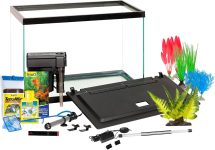
Black Friday Tetra Aquarium, 20 Gallon, Complete Aquarium Kit Review – Oemiu
Black Friday Tetra Aquarium, 20 Gallon, Complete Aquarium Kit Review
The allure of a vibrant underwater world gracing your living space is undeniable. For many, the dream of owning an aquarium starts small, perhaps with a Betta fish in a bowl. But the true magic unfolds when you step into the realm of larger, more established setups. The Tetra 20 Gallon Complete Aquarium Kit, often a coveted item during Black Friday sales, promises to be a gateway to that aquatic dream. But does it live up to the hype? Is it truly a “complete” kit, and is it the right choice for you? Let’s dive deep and explore every facet of this popular aquarium setup.
Unboxing the Underwater Oasis: What’s Included?
The “complete” in the Tetra 20 Gallon Complete Aquarium Kit isn’t just a marketing buzzword; it actually contains a substantial amount of what you’ll need to get started. However, understanding exactly what’s in the box, and what you’ll still need to purchase, is crucial for a smooth setup experience. The core of the kit is, of course, the 20-gallon glass aquarium itself. This tank is generally constructed with durable glass and sealed with silicone, providing a clear viewing pane for your future underwater landscape. It’s a standard rectangular shape, which offers flexibility in terms of aquascaping and fish selection. Beyond the tank, the kit typically includes a Tetra Whisper internal power filter with a pre-installed filter cartridge. This filter is the workhorse of your aquarium, responsible for removing particulate matter, biological waste, and chemical impurities from the water. A heater, often pre-set to a comfortable temperature for tropical fish (around 78 degrees Fahrenheit), is also included. This is essential for maintaining a stable and healthy environment for most commonly kept aquarium fish.
Lighting is provided by an LED hood, offering energy-efficient illumination to showcase your aquatic inhabitants and support plant growth (although higher light demanding plants may require supplemental lighting). A thermometer is included for monitoring the water temperature, ensuring it remains within the optimal range. The kit also comes with a sample of Tetra Water Conditioner, which removes harmful chlorine and chloramine from tap water, making it safe for your fish. Fish food is typically included as a small starter sample to get you going. A net for catching and transferring fish, and a setup guide, round out the core components. However, remember that “complete” doesn’t mean “everything.” You’ll still need to factor in essential items like gravel or substrate for the bottom of the tank, decorations to provide shelter and visual interest for your fish, and, of course, the fish themselves! Think of this kit as a solid foundation upon which you can build your dream aquarium. Black Friday deals on a 20-gallon Aquarium Kit can make the initial investment much easier to stomach, allowing you to allocate more of your budget towards these crucial supplemental items.
A Closer Look at Key Components
The Tetra Whisper filter deserves special attention. It’s a three-stage filtration system, incorporating mechanical, chemical, and biological filtration. The mechanical stage removes particulate matter like uneaten food and fish waste. The chemical stage typically utilizes activated carbon to remove odors, discoloration, and harmful chemicals. The biological stage provides a surface for beneficial bacteria to colonize, which are essential for converting toxic ammonia and nitrite into less harmful nitrate. While the Whisper filter is adequate for a lightly stocked aquarium, consider upgrading to a higher-capacity filter as your fish population grows or if you plan to keep fish that produce a lot of waste. The LED lighting included in the Tetra kit is generally sufficient for low-light plants like Java Fern, Anubias, and Marimo Moss Balls. If you want to keep more demanding plants, you’ll likely need to upgrade to a more powerful LED fixture. Many hobbyists find themselves wanting more control over the lighting schedule and intensity, which after-market LED units can provide. The included heater is usually a submersible type and is pre-set to a specific temperature. While convenient, this lack of adjustability can be a limitation. Consider investing in an adjustable heater to have more control over the water temperature, especially if you plan to keep fish that require a specific thermal range. Finally, although seemingly simple, a reliable thermometer is essential. Opt for a digital thermometer for greater accuracy and ease of reading. While the stick-on thermometer included with the kit is a good starting point, they are often less accurate than digital options.
| Component | Included? | Considerations |
|---|---|---|
| 20-Gallon Glass Aquarium | Yes | Standard rectangular shape, durable glass. |
| Tetra Whisper Internal Filter | Yes | Adequate for light stocking, consider upgrading for heavier bioloads. |
| Heater | Yes | Usually pre-set, consider an adjustable heater. |
| LED Hood Lighting | Yes | Sufficient for low-light plants, upgrade for higher light demands. |
| Thermometer | Yes | Stick-on type, consider a digital thermometer for accuracy. |
| Water Conditioner Sample | Yes | Essential for dechlorinating tap water. |
| Fish Food Sample | Yes | Small starter sample. |
| Fish Net | Yes | Standard net for catching fish. |
| Setup Guide | Yes | Helpful for beginners. |
| Gravel/Substrate | No | Required for bottom of tank. |
| Decorations | No | Required for shelter and visual interest. |
| Fish | No | The stars of the show! |
Setting Up Your Tetra 20 Gallon Aquarium Kit
Setting up your new aquarium is a crucial step that determines the long-term health and success of your aquatic ecosystem. Patience and attention to detail are key. Begin by selecting a stable, level surface that can support the weight of a filled 20-gallon tank (which can easily exceed 200 pounds). Avoid direct sunlight, as this can promote excessive algae growth. Rinse the aquarium thoroughly with water, but do not use soap or detergents, as these can be harmful to fish. Next, add your chosen substrate (gravel or aquarium soil) to the bottom of the tank. Rinse the substrate thoroughly before adding it to the tank to remove any dust or debris. Position your decorations, rocks, and driftwood to create a visually appealing and functional environment for your fish. Leave plenty of open swimming space and provide hiding places for shy or territorial species. Once the decorations are in place, carefully fill the tank with dechlorinated tap water. Use a water conditioner, like the Tetra Water Conditioner included in the kit, to remove chlorine and chloramine. Install the heater and filter according to the manufacturer’s instructions. Ensure that the heater is fully submerged and that the filter is positioned to provide adequate water circulation. Place the thermometer in a visible location to monitor the water temperature.
Plug in the heater and filter, and allow the tank to cycle for several weeks before adding any fish. The cycling process is essential for establishing a healthy biological filter. Beneficial bacteria will colonize the filter media and convert toxic ammonia and nitrite into less harmful nitrate. You can accelerate the cycling process by adding a source of ammonia, such as a small piece of fish food or a commercially available ammonia product. Test the water regularly using a liquid test kit to monitor the levels of ammonia, nitrite, and nitrate. Once the ammonia and nitrite levels consistently read zero, and the nitrate level is below 20 ppm, the tank is cycled and ready for fish. Adding fish too early can lead to ammonia poisoning and death. When adding fish, do so gradually, introducing only a few fish at a time to avoid overwhelming the biological filter. Float the bag containing the fish in the aquarium for about 15-30 minutes to allow the water temperature to equalize. Then, slowly add small amounts of aquarium water to the bag over the next 15-30 minutes to acclimate the fish to the water chemistry. Finally, gently net the fish and release them into the aquarium. Avoid pouring the water from the bag into the aquarium, as it may contain harmful contaminants. Regularly test the water parameters and perform partial water changes (25-50%) every 1-2 weeks to maintain a healthy environment for your fish. A proper setup is the cornerstone to a thriving ecosystem within your 20-gallon Aquarium Kit.
Stocking Considerations for Your 20-Gallon Aquarium Kit
Choosing the right fish for your 20-gallon aquarium is crucial for their health and well-being. Overcrowding is a common mistake that can lead to poor water quality, stress, and disease. A general rule of thumb is to stock one inch of adult fish per gallon of water. However, this is just a guideline, and other factors, such as the fish’s behavior, activity level, and waste production, should also be considered. Schooling fish, such as Neon Tetras or Harlequin Rasboras, require a group of at least six individuals to feel secure and exhibit their natural behavior. A 20-gallon tank can comfortably accommodate a school of 6-8 small tetras or rasboras. Bottom-dwelling fish, such as Corydoras Catfish, are excellent scavengers that help keep the bottom of the tank clean. A group of 3-4 Corydoras can be a great addition to a 20-gallon aquarium. Avoid stocking large or aggressive fish, such as Oscars or Cichlids, in a 20-gallon tank, as they require much larger tanks and can be harmful to smaller fish. Betta fish, also known as Siamese Fighting Fish, are popular choices for small aquariums. However, they should be kept alone or with peaceful tank mates, as they can be aggressive towards other fish with long fins or bright colors. Invertebrates, such as snails and shrimp, can also be a valuable addition to an aquarium. They help control algae growth and scavenge for uneaten food. Nerite snails are excellent algae eaters, while Cherry Shrimp add a splash of color and can help keep the tank clean. Thoroughly research the compatibility and requirements of any fish or invertebrates before adding them to your aquarium. Consider factors such as their adult size, temperament, water parameters, and diet. A well-planned stocking list will ensure a harmonious and thriving aquatic community. The pleasure of watching a balanced ecosystem flourish within your Tetra 20 Gallon Aquarium Kit is well worth the initial effort of researching your stock list.
Remember that the “inch per gallon” rule is a simplification. Consider the adult size of the fish. A 2-inch fish will have a much greater impact on the bioload than two 1-inch fish. Also, consider the shape of the fish. Tall-bodied fish like Angelfish, while visually appealing, need tall tanks, which a standard 20-gallon isn’t. A 20-gallon long tank, with its increased footprint, might be a better option if you really want a few of these, but even then, be mindful of their adult size. Avoid impulse purchases. Resist the urge to buy every colorful fish you see at the pet store. Many seemingly small fish can grow surprisingly large, quickly outgrowing a 20-gallon tank. Quarantine new fish. Before adding new fish to your established aquarium, quarantine them in a separate tank for 2-4 weeks to observe them for any signs of illness or disease. This will prevent the introduction of diseases to your main aquarium. A small, inexpensive quarantine tank can save you a lot of heartache and prevent a potential disaster. Understanding these nuances is critical in creating a healthy environment when setting up a complete Aquarium Kit.
Pros and Cons of the Tetra 20 Gallon Complete Aquarium Kit
Like any product, the Tetra 20 Gallon Complete Aquarium Kit has its strengths and weaknesses. Understanding these can help you make an informed decision about whether it’s the right choice for you. On the positive side, the kit offers a convenient and affordable way to get started in the aquarium hobby. It includes most of the essential equipment you’ll need, making it a good option for beginners who may be overwhelmed by the prospect of purchasing individual components. The Tetra Whisper filter is a reliable and efficient filter that provides adequate filtration for a lightly stocked aquarium. The LED lighting is energy-efficient and provides sufficient illumination for low-light plants. The setup guide is clear and easy to follow, making the setup process straightforward. Black Friday deals can make this kit even more attractive, offering significant savings compared to purchasing individual components.
However, the kit also has some limitations. The included heater is pre-set and not adjustable, which can be a problem if you need to maintain a specific temperature for your fish. The LED lighting may not be sufficient for high-light plants. The filter, while adequate for a lightly stocked aquarium, may need to be upgraded as your fish population grows or if you plan to keep fish that produce a lot of waste. The kit does not include gravel, decorations, or fish, which need to be purchased separately. The water conditioner and fish food samples are small and will need to be replenished quickly. While the Tetra 20 Gallon Complete Aquarium Kit provides a good foundation for a beginner aquarium, it may require some upgrades and additions to meet the specific needs of your fish and plants. Weigh the pros and cons carefully before making a purchase to determine if it’s the right choice for you. Here’s a quick summary:
- Pros:
- Convenient and affordable starter kit.
- Includes essential equipment.
- Reliable Tetra Whisper filter.
- Energy-efficient LED lighting.
- Easy-to-follow setup guide.
- Often available at discounted prices during Black Friday.
- Cons:
- Pre-set, non-adjustable heater.
- Limited LED lighting for high-light plants.
- Filter may need to be upgraded.
- Does not include gravel, decorations, or fish.
- Small water conditioner and fish food samples.
Black Friday Aquarium Kit: Securing the Best Deal
Black Friday is a prime time to snag deals on aquarium equipment, and the Tetra 20 Gallon Complete Aquarium Kit is often a popular item. However, navigating the Black Friday frenzy requires a strategic approach. Start by researching prices in advance. Check the prices of the kit at different retailers, both online and in-store, in the weeks leading up to Black Friday. This will give you a baseline price to compare against Black Friday deals. Sign up for email newsletters and follow your favorite retailers on social media to stay informed about upcoming Black Friday sales and promotions. Many retailers offer exclusive deals to their subscribers. Create a shopping list and prioritize the items you need. Focus on the essentials, such as the aquarium kit, gravel, decorations, and a reliable heater. Be prepared to act quickly. Black Friday deals often sell out quickly, so be ready to make your purchase as soon as the sale begins. Check for online coupons and promo codes. Many retailers offer additional discounts that can be applied at checkout. Compare prices across different retailers, even during the Black Friday sale. Some retailers may offer better deals than others. Consider purchasing the kit online. Online retailers often offer lower prices and free shipping. Be aware of shipping costs and return policies. Some retailers may charge high shipping fees or have restrictive return policies. Read reviews of the kit before making a purchase. This will help you get a better understanding of the product’s quality and performance. Don’t get caught up in the hype. Stick to your budget and avoid making impulse purchases. Remember, the goal is to get the best possible deal on the items you need. Securing a 20-gallon Aquarium Kit on Black Friday requires preparation, patience, and a clear understanding of your needs and budget. Good luck and happy shopping!
Frequently Asked Questions (FAQ)
What fish are suitable for a 20-gallon aquarium?
A 20-gallon aquarium provides a good starting point for a variety of smaller, peaceful fish species. Popular choices include Neon Tetras, Cardinal Tetras, Harlequin Rasboras, and Guppies. Corydoras Catfish are excellent bottom dwellers that help keep the tank clean. Remember to keep schooling fish in groups of at least six to promote their well-being. Avoid larger or aggressive fish, such as Oscars or Cichlids, as they require much larger tanks and can be harmful to smaller fish. Betta fish (Siamese Fighting Fish) can be kept in a 20-gallon tank, but they should be kept alone or with peaceful tank mates, as they can be aggressive towards other fish with long fins or bright colors. Always research the specific needs of each fish species before adding them to your aquarium to ensure a healthy and harmonious environment. Pay attention to adult size, temperament, and water parameter requirements.
How often should I change the water in my aquarium?
Regular water changes are crucial for maintaining a healthy aquarium environment. Partial water changes (25-50%) should be performed every 1-2 weeks. This helps remove accumulated nitrates, which are a byproduct of the biological filtration process, and replenish essential minerals. The frequency of water changes may need to be adjusted depending on the fish population, feeding habits, and plant density. Heavily stocked tanks may require more frequent water changes. Always use dechlorinated water that is the same temperature as the aquarium water to avoid shocking the fish. A good practice is to siphon the gravel during water changes to remove accumulated debris and uneaten food. Monitor your water parameters regularly to determine the optimal water change schedule for your specific aquarium. A proper water change schedule is a cornerstone of maintaining a healthy ecosystem for your Aquarium Kit’s inhabitants.
How long does it take for an aquarium to cycle?
The aquarium cycling process, also known as establishing the biological filter, typically takes 4-8 weeks. This process involves the establishment of beneficial bacteria that convert toxic ammonia and nitrite into less harmful nitrate. The cycling process can be accelerated by adding a source of ammonia, such as a small piece of fish food or a commercially available ammonia product. Test the water regularly using a liquid test kit to monitor the levels of ammonia, nitrite, and nitrate. The aquarium is considered cycled when the ammonia and nitrite levels consistently read zero, and the nitrate level is below 20 ppm. Adding fish before the aquarium is fully cycled can lead to ammonia poisoning and death. Patience is key to a successful aquarium setup.
What plants are suitable for a low-light aquarium setup?
Several plants thrive in low-light conditions and are suitable for the Tetra 20 Gallon Complete Aquarium Kit, which typically comes with basic LED lighting. Java Fern is a hardy and easy-to-grow plant that can be attached to rocks or driftwood. Anubias is another low-light plant that tolerates a wide range of water parameters. Marimo Moss Balls are unique and easy to care for, adding a touch of greenery to the aquarium. Java Moss is a versatile plant that can be used to create a carpet, attach to decorations, or provide shelter for small fish. These plants not only enhance the aesthetics of the aquarium but also help improve water quality by absorbing nitrates and producing oxygen. Choosing low-light plants is ideal if you don’t want to invest in more powerful aquarium lighting.
What type of substrate should I use in my aquarium?
The choice of substrate depends on the type of fish and plants you plan to keep. Gravel is a popular and affordable option that provides a good surface for beneficial bacteria to colonize. It is easy to clean and maintain. Aquarium soil is a nutrient-rich substrate that is ideal for planted aquariums. It provides essential nutrients for plant growth and helps lower the pH of the water. Sand is a fine-grained substrate that is suitable for bottom-dwelling fish, such as Corydoras Catfish. It is also easy to clean. Consider the specific needs of your fish and plants when choosing a substrate. Rinse the substrate thoroughly before adding it to the aquarium to remove any dust or debris. The substrate you select plays a key role in the overall health of your Aquarium Kit.
How do I prevent algae growth in my aquarium?
Algae growth is a common problem in aquariums, but it can be managed with proper maintenance. Regular water changes (25-50%) help remove excess nutrients that fuel algae growth. Avoid overfeeding your fish, as uneaten food can contribute to algae growth. Provide adequate lighting for your plants, but avoid excessive light exposure, as this can promote algae growth. Consider adding algae-eating fish, such as Otocinclus Catfish or Nerite Snails, to your aquarium. Manually remove algae from the glass and decorations using an algae scraper or a soft brush. Maintaining a balanced ecosystem is key to preventing excessive algae growth.
What is the ideal water temperature for a tropical aquarium?
The ideal water temperature for a tropical aquarium is typically between 75-82°F (24-28°C). Most commonly kept tropical fish thrive within this temperature range. However, some species may have specific temperature requirements. Research the specific needs of your fish before setting the water temperature. Use a reliable aquarium heater to maintain a stable water temperature. Monitor the water temperature regularly using a thermometer. Avoid sudden temperature fluctuations, as these can stress the fish. Gradual temperature changes are less stressful. Proper temperature control is essential for the health and well-being of your tropical fish in your Tetra Aquarium Kit.
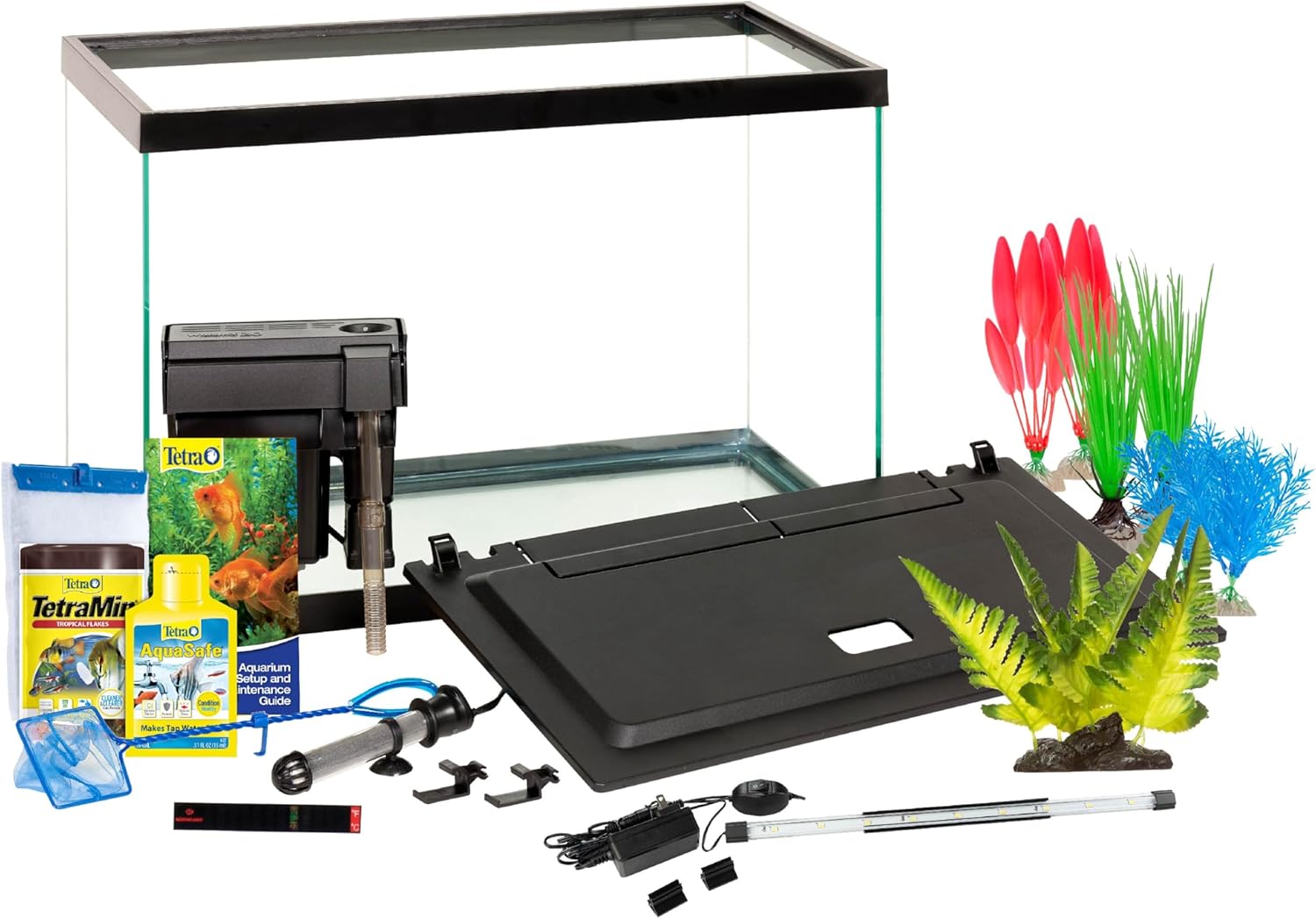
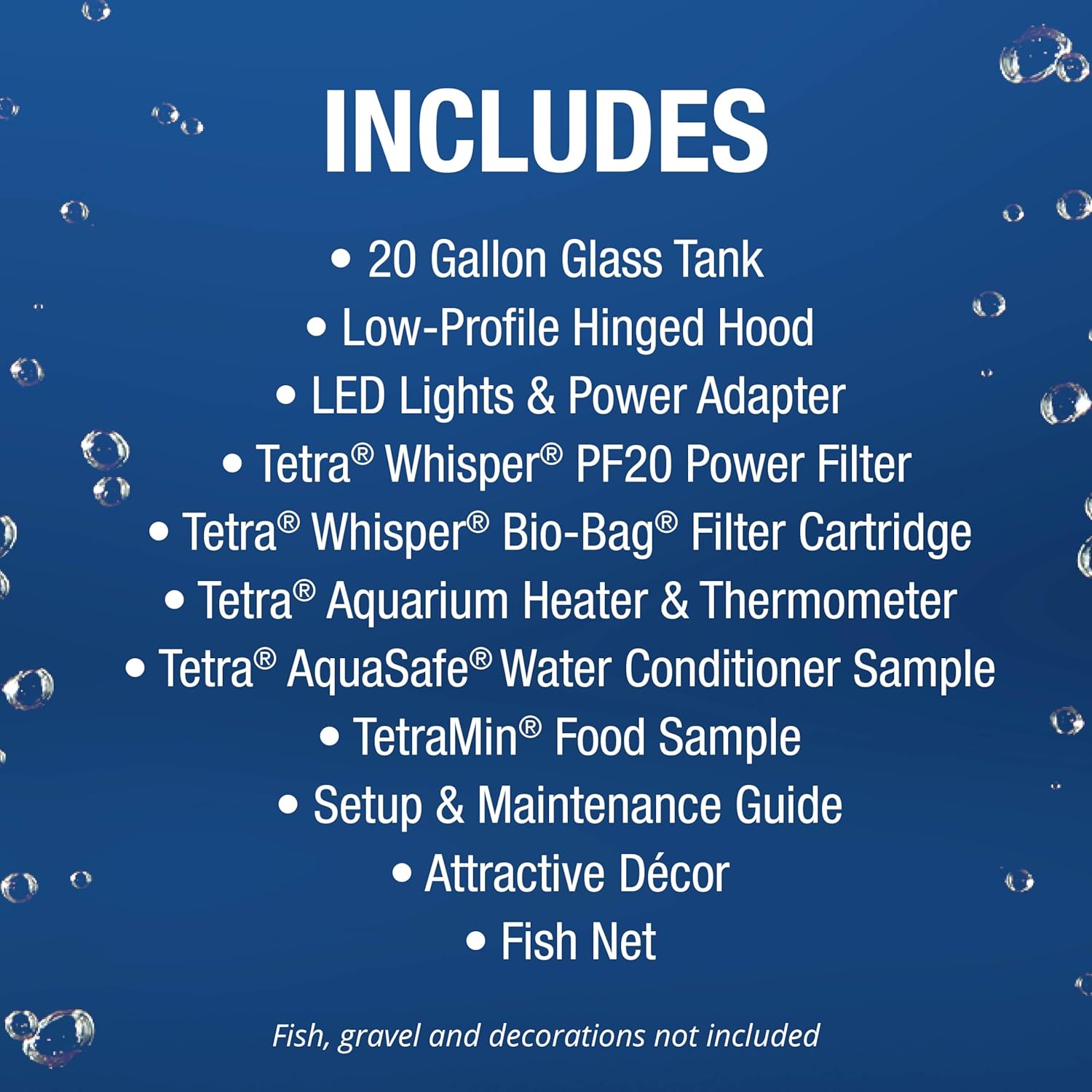

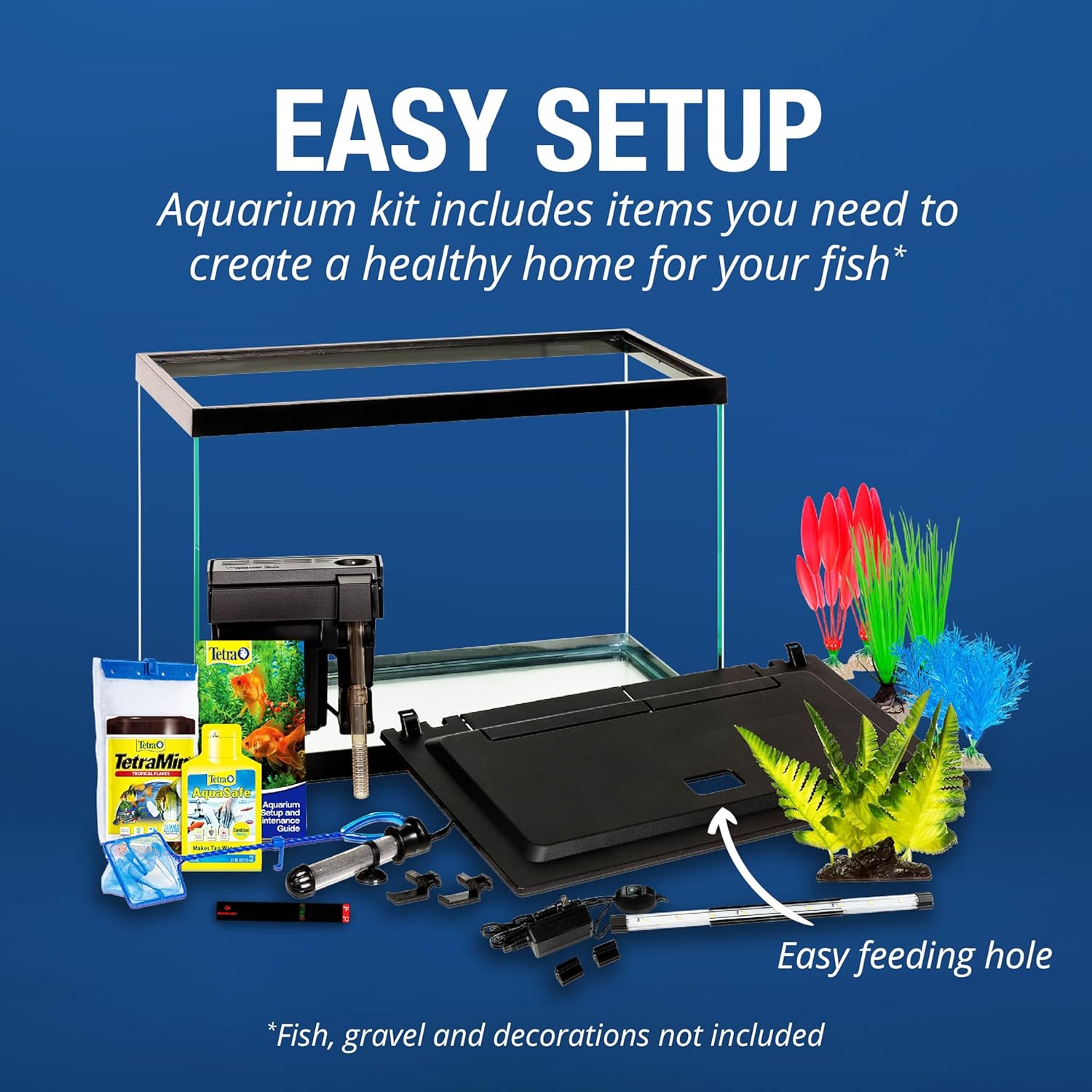
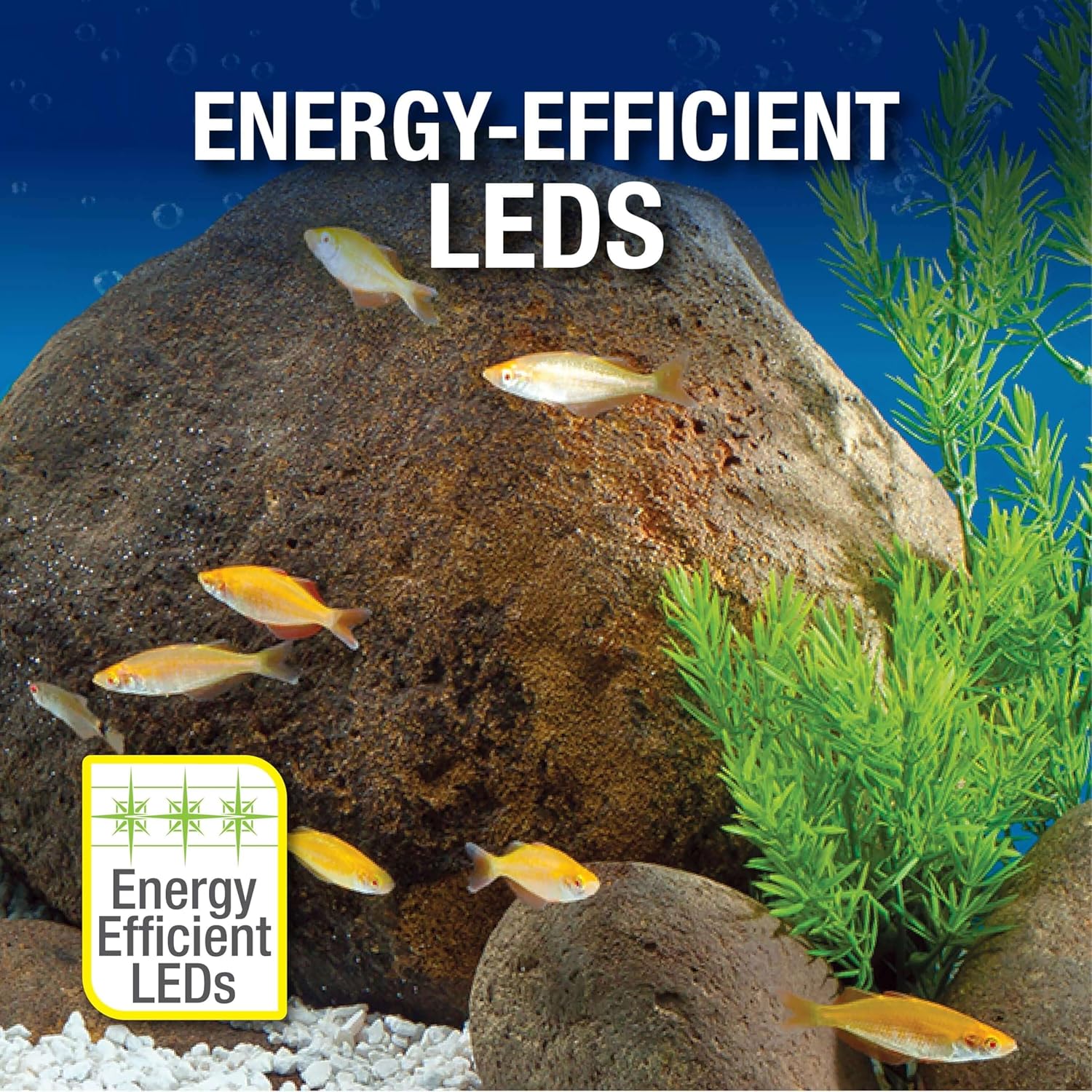
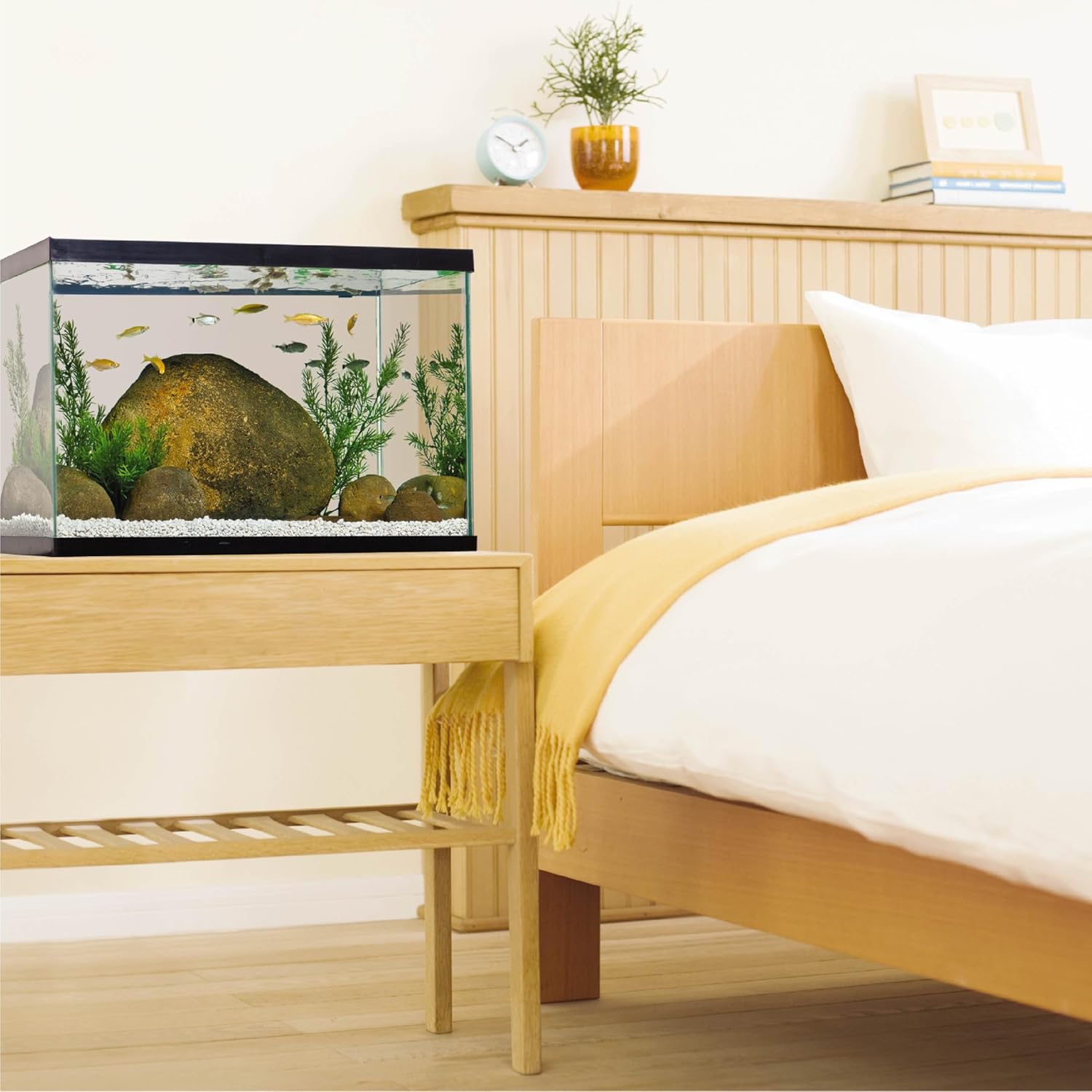
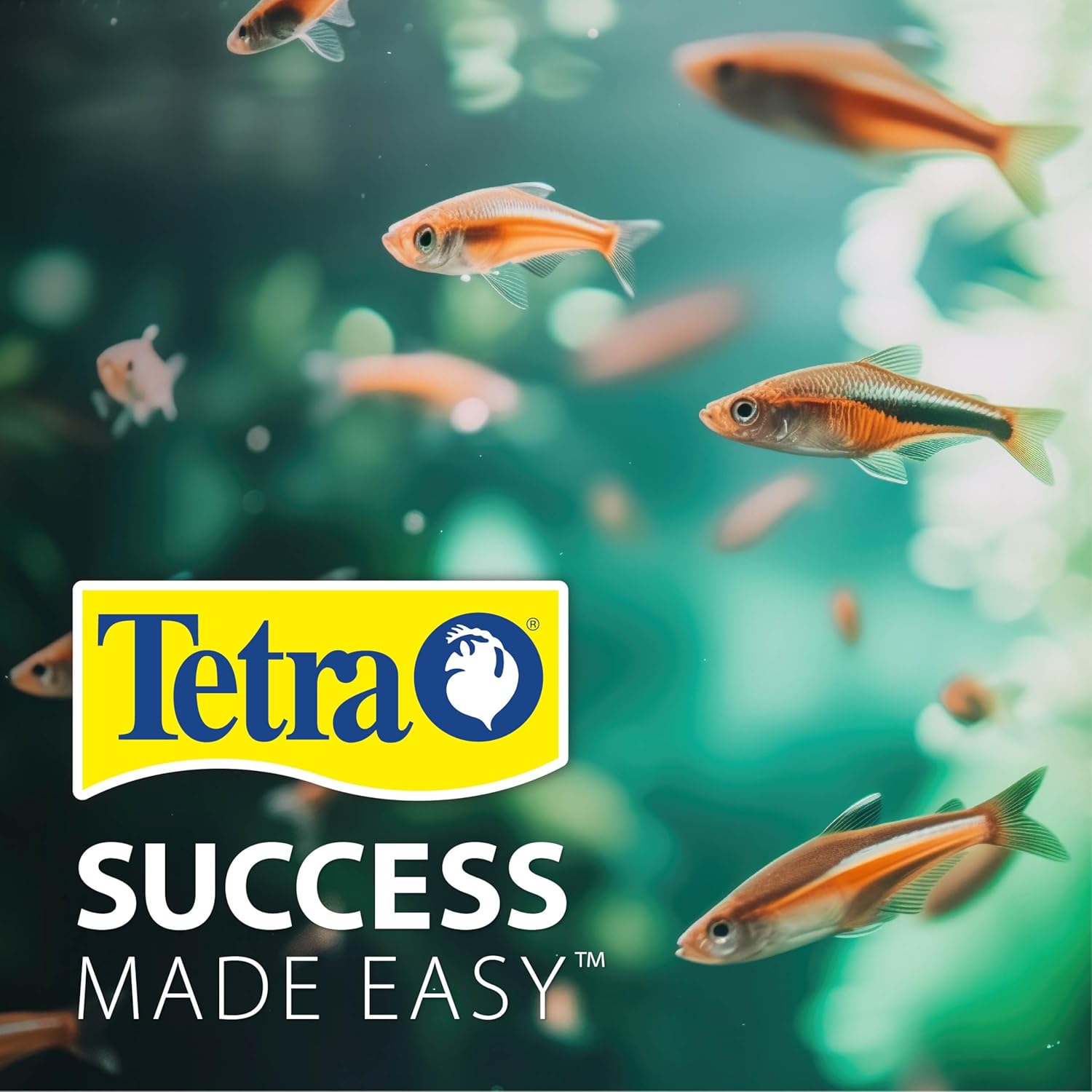
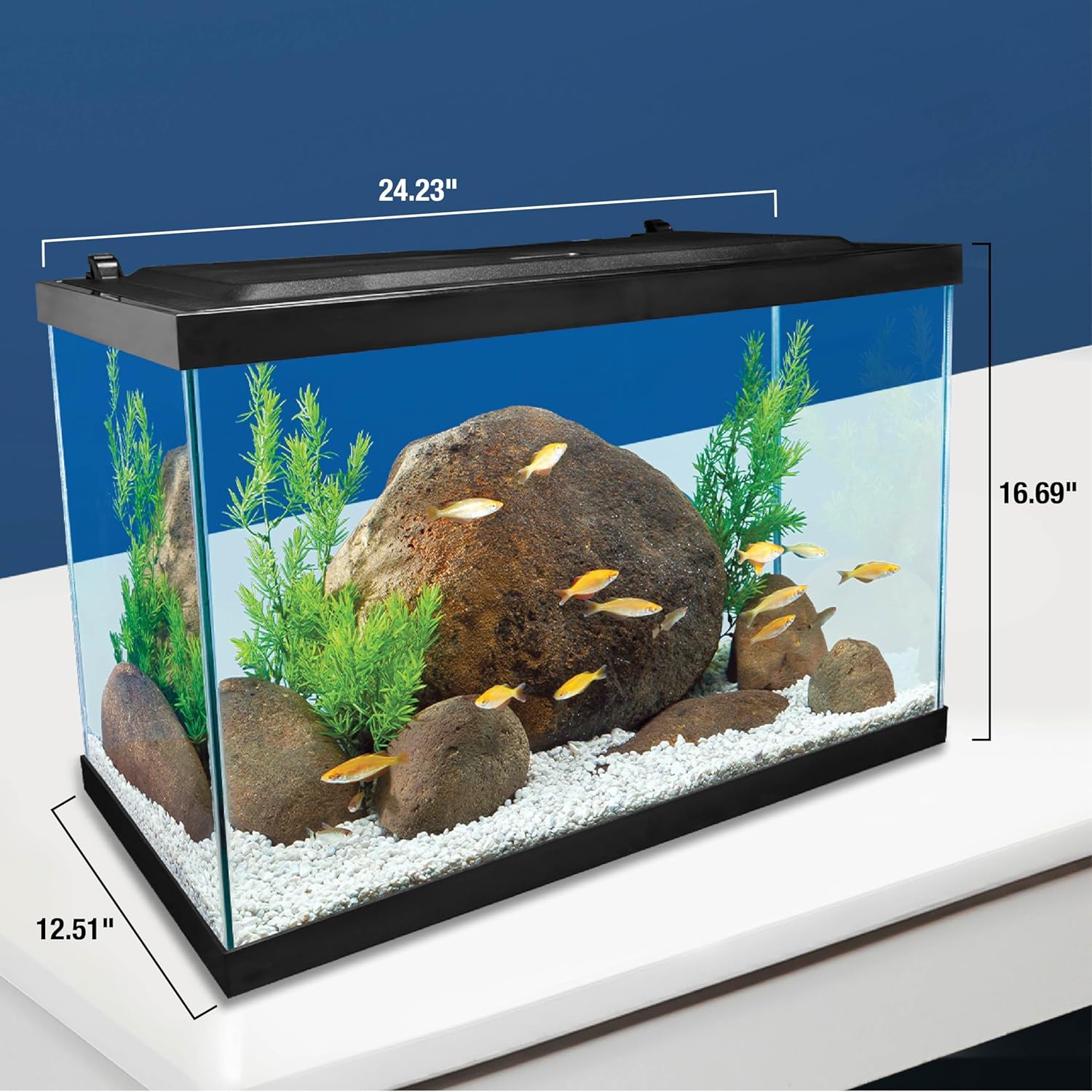
Price: $349.95 - $119.14
(as of Sep 08, 2025 07:24:13 UTC – Details)




